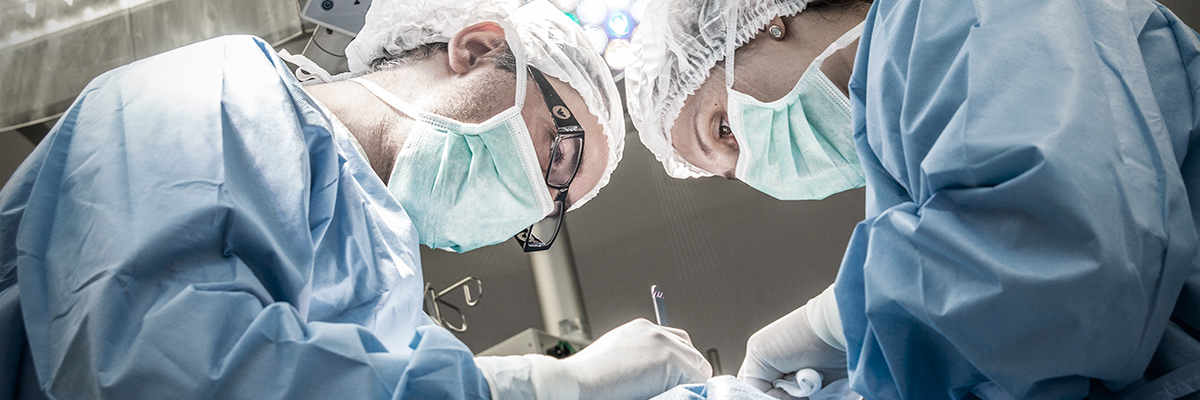
Oral and Maxillofacial Surgery
Oral Surgery
The field of oral surgery is quite extensive, being the most frequent dental extraction. Teeth may be fully erupted (intact or not) or included (still retained in the bone).
After a correct diagnosis has been made, the treatment plan may undergo dental extraction. To do this, your dentist will perform a local infiltrative anesthesia so that the entire procedure is performed in the absence of pain.
This is a simple procedure, which should not be done fasting.
After dental extraction, the patient should take the following care:
- Strict oral hygiene to prevent infections
- At the extraction site, use a soft brush
- Avoid hot and hard foods during the first 24 hours
- Avoid physical exertion and very hot environments
- Sleep with the head slightly higher and lie down on the opposite side to the surgery
- It may be necessary to apply ice during the first 24 hours
- Avoid smoking during the first 24 hours
- After 24 hours of surgery, mouthwash with oral antiseptics 2 to 3 times a day as they improve hygiene, helping to prevent the development of an infection.
Occlusion and TMJ
The temporoandibular joint (TMJ) is the most complex joint of our human body. Like all the others, there is a disc to interpose the condyle of the jaw that is in contact with the temporal bone. Sometimes this disc may be poorly positioned with noises such as clicking and clacking or even crackling during the opening and closing movement of the mouth. The presence of pain means that there is some inflammation in the ligaments or muscles adjacent to the TMJ.
The treatment of these problems is dependent on a correct diagnosis that can sometimes be aided by radiological examinations. Usually the confection of a drip, physiotherapy exercises, thermotherapy, help solve some problems.
A situation with a high frequency in the general population that may have negative repercussions on the TMJ, is the creaking of the teeth during nighttime bruxism. While we sleep we can tighten and / or grind our teeth continuously. These movements are ordered by our central nervous system, but as we are sleeping we do not realize nor can we avoid them. This often results in a wear of the incisal edge of the teeth (initially in the canines, central and lateral incisors) compromising esthetics, also causes pain / tension in some muscles of the face, TMJ pain, difficulty opening the mouth upon waking, head, among others. The treatment of bruxism initially involves the realization of a nocturnal relaxation gutter consisting of an acrylic device placed on the teeth (upper or lower, depending on the case) protecting them from wear and tear, keeping the dental arches 2mm apart.
A malocclusion may be due to the absence of teeth and / or a poor positioning thereof which can also lead to poor articulation between the upper and lower teeth. This often results in TMJ pain, decreased masticatory efficiency, aesthetic problems, among others. The solution of these problems can be through an orthodontic correction and oral rehabilitation with prosthesis (fixed or removable).
Open TMJ surgery may be indicated for patients with internal articular disorders, such as, for example, full disc displacements accompanied by decreased mouth opening and pain, TMJ arthrosis, TMJ rheumatoid arthritis, TMJ ankylosis, among other diseases . When well indicated the surgery may be beneficial to patients. Surgery should usually be indicated after less invasive treatment attempts.
Oral Pathology
Surgical approach of oral pathology in particular of large odontogenic and / or non-odontogenic cysts with indication for total excision and subsequent reconstruction of recurrent surgical loops to autogenous bone grafts and / or biomaterials and membranes.
Bone grafts
Carrying out autogenous bone grafts from the chin region in order to overcome bone deficiencies and atrophies at the maxillary or mandibular level; as well as performing maxillary sinus elevation for posterior placement of dental implants
Orthognathic Surgery
Orthognathic surgery aims to restore a normal facial pattern in adult patients with altered facial bone development. The treatment with orthognathic surgery is a procedure that always includes the association of an orthodontic treatment with a surgical one to provide aesthetic and functional improvements of the patients.
Orthognathic surgery is indicated in patients with skeletal and dental disharmony, whose solution is not only provided by orthodontic treatment – since there is an excess or lack of growth of the bony bases of the face. Surgery is indicated for patients with mandibular retrognathism or prognathism, which consist, respectively, of the retrusion or protrusion of the mandible. Other patients may also have growth problems in the maxilla or even associated in the maxilla and mandible.
The use of osteosynthesis mini plates and screws provides a rapid recovery of the patient.
Surgical intervention that should be performed under general anesthesia, thus avoiding pain discomfort and muscular fatigue. In addition, we allow better intra and postoperative control of any surgical complications.
Mentoplasty
Mentoplasty is a surgical intervention in the breast, to reduce or increase it according to the individual needs of each patient.
Surgical intervention that may be performed under local or general anesthesia.
Rhinoplasty
Rhinoplasty is a surgery performed on the nasal structure to improve the aesthetics or breathing of the individual. It serves to correct traumatic or natural deformities and also to correct dysfunctions. It is often associated with a mentoplasty, for the result to harmonize the forms of the face. Modern rhinoplasty aims to restructure the nose by treating its deformities, by reducing the osteocartilaginous structures (reduction rhinoplasty) or by the inclusion of osteocartilaginous grafts (augmentation rhinoplasty).
Surgical intervention that should be performed under general anesthesia, thus avoiding pain discomfort and muscular fatigue. In addition, we allow better intra and postoperative control of any surgical complications.
